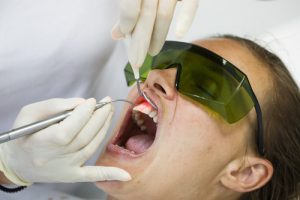Dental treatment is usually the first step in the progression of the periodontitis, but even if this condition is not life-threatening, it is still an unpleasant experience. Unfortunately, many patients are left with teeth that are in bad shape due to periodontitis. While not every patient needs to undergo a tooth extraction, there are some patients who should consider at least one type of dental treatment and should always have a dentist look at their teeth.
The first stage of periodontitis is usually characterized by gingivitis, which is characterized by plaque buildup on the gums. This gum disease is caused by bacteria that has found its way into your mouth. Gum disease can also be the result of an infection, as it can be the result of a virus that has traveled through the gums. For the first stage, there are two main types of gum disease: periodontitis accompanied by periodontitis.
What is Periodontal Disease Treatment? Dentists have developed many different methods of dealing with periodontitis. The most common treatment for this condition is periodontitis surgery. This surgical procedure is usually recommended by a dentist after the patient is unable to treat the gingivitis.
Although not required by all people experiencing periodontitis, this surgical treatment is usually recommended by most people because it is the only effective way for most patients to get their condition under control. Periodontist use anesthesia to numb the area of treatment and then insert the endoscopic cameras into the gum tissue.
The camera will then take pictures of the gum tissue so that the surgeon can make a digital reconstruction of the gum tissue using the images taken from the camera.
The next stage that the periodontist uses is a periodontist root canal. In the course of the root canal, the dentist will remove the pockets of plaque that has formed in the gum tissue. These pockets, called calculus, may have formed because of the periodontitis or because of an infection.
Other factors that can contribute to calculus formation include poor oral hygiene and poor diet. Once the calculus is removed, the periodontist can use antibiotics to kill any remaining bacteria that may be present.
After the antibiotics are administered, the dentist may recommend periodontal to help keep the teeth healthy. For a person with periodontitis, the dentist may use dental floss or root planters to remove any remaining plaque from the mouth.
What is Periodontal Disease Treatment Part Two? Next, the dentist may recommend that the patient follow a regular gum care routine in order to prevent the recurrence of gum disease. The periodontist will give the patient fluoride mouthwash to prevent cavities and promote healthy gums.
Also, the dentist may recommend a topical treatment to prevent plaque buildup in the mouth. Antibiotics and other medicines are given to help restore oral health. Finally, antibiotics can be used to kill bacteria that may have been reintroduced by the plaque.
What is Periodontal Disease Treatment Part Three? One of the most popular treatments used for periodontitis is laser dentistry. This procedure can be used to remove the bacteria that cause the condition, but it is generally reserved for those patients who cannot afford expensive treatments.